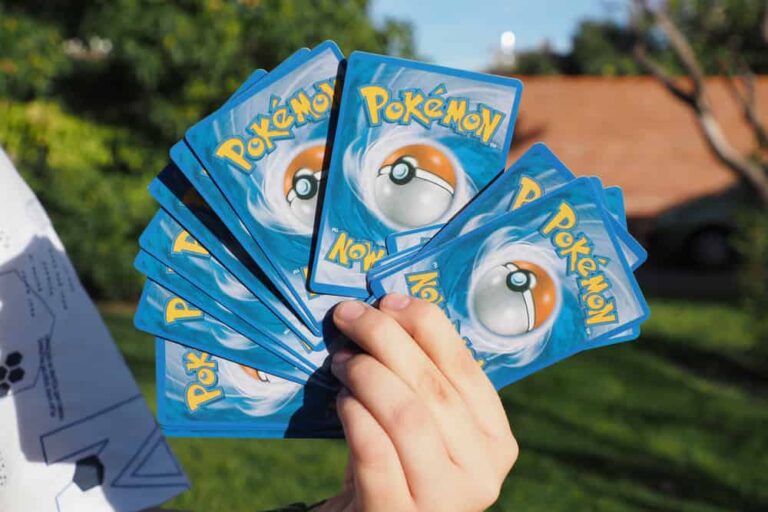With more celebrities every day coming out with makeup lines, your inner entrepreneur may be buzzing at the chance of being able to do the same. And if you’ve made the decision already that lipstick is going to be the focus of your brand new product line, it then begs the question of exactly how to start a lipstick business yourself.
This is why we’ve done the research based on those who’ve been there, done that so you too can follow in their footsteps to become a successful cosmetics mogul!
And by following each step of the process, you’ll see that it’s more than possible for you to realize your dream of being able to start a small cosmetic business from home – and, if you want, eventually growing your own lipstick brand to becoming, say, the next Bobbi Brown!
How to start a lipstick business
1. Do some initial market research
Before sinking a lot of time (and potentially a lot of money) into starting a lipstick business, it’s important to be sure that the numbers make sense for you to go ahead with this.
This means researching both the industry as a whole as well as any specific niche you’re looking at targeting. You don’t have to do an entire business plan or have every single fact at this point. However, you should have at least a solid understanding of the cosmetics industry, particularly to work out where there may be a gap in the market for starting your own lipstick brand.
Keep in mind that the cosmetics industry worldwide is worth over $530 billion so we know people are spending money here. It’s just good to also know if the figures indicate that you’ll be able to get a share of that spending.
To do this, you may not want to just limit yourself to online research. For example, going to trade shows can be really helpful, as can reaching out to people directly who are where you’d like to be to find out how they got started.
2. Decide on the business’ name
It’s a good idea to decide on your business’ name early on in the process. That way, you can start to frame the rest of your business plan around this concept.
And when it comes to cosmetics lines, a lot of people choose to use their own name. Just ask François Nars, Max Factor, Bobbi Brown and Estee Lauder. That said, it’s not a requirement given how many makeup companies use other names, so feel free to branch out and be creative.

What’s important here though is that you secure the domain name of your business’ name as soon as you can. In fact, this is one of the main reasons that it’s good to decide on the name now. While you can always change it later, you’d kick yourself if you waited a few more steps and your dream site name was snapped up already.
I always use Namecheap to buy my domain names. They’re great value, very secure and have been great at answering any questions I may have.
So start brainstorming names and as soon as you find one you like and is available, make sure you grab it.
You can use Namecheap’s domain search to start hunting for your ideal name to lock down.
(For example, the one in the screenshot below is available at the time of writing this, amazingly!)
3. Secure your social media handles
In addition to finding an available website address, you should make sure that you also secure at least the main social media handles for your business.
You don’t need to have a profile on every single platform nor does this mean you have to start working on your social media presence immediately.
However, you should at least have your business’ name on sites like Facebook and Instagram just in case you want to use them in future.
4. Create your website
You’re going to have to start talking to people about your new lipstick business soon so it’s good to prove that you have some online presence to establish your legitimacy.
This doesn’t mean building an entire site just yet. For example, you could leave your site with a very simple “lipstick revolution coming soon” message, as something to grab their interest.
Fortunately, this is super easy to do, even if you don’t have any sort of tech background. The first thing you’ll need to do is pay for a host for your site and, for that, my top pick for beginners is Bluehost. They make your website blazingly fast and, the best part, cost less than $3 per month – and they’ll even throw in a free domain name!
Paid for your host but don’t know what’s next? You can easily launch your website yourself – even if you don’t have any tech experience!
See our step-by-step guide on how to start your own site to see just how to do this in less than 20 minutes.
5. Prepare your business plan
You did some initial research and brainstorming in the first step of thinking about whether to start a lipstick business, but now it’s time to get serious with this.
That is, you’ve presumably identified the market gap for your new lipstick line, so your next priority is preparing a business plan for executing the idea.

By designing a lipstick business plan, you’re making sure you have a full understanding of how the industry works and, importantly, how your business will fit within this. You can find examples of a lipstick line business plan online, but they generally include details like identifying the target market, defining your marketing and pricing strategy, and conducting a SWOT analysis.
All of this information is vital for the successful execution of your business idea and should cover such points as:
- Understand the industry: As a business in the very competitive cosmetic industry, it is essential to understand how the industry operates, including its success rate. This information is crucial in gauging your business’ likely success rate within the market and, critically, what you have to do to reach that success.
- Target customer: Get to understand what your potential customers are looking for so you’re able to address their needs with your product line.
- Pricing strategy: Does your target market comprise high-income earners or are you aiming for a different demographic? The pricing strategy will be largely influenced by the disposable income of your target customers, as well as your competitors’ price ranges.
6. Address the legalities
It’s important to ensure that you’ve ticked every legal box that’s needed to start a lipstick business to avoid getting into trouble down the line. This includes some requirements that are specific to cosmetics, like those issued by the FDA. At the same time, there are other requirements to follow no matter what your business is selling.
On that point, one of your first actions here should be to register your business with the appropriate state and federal authorities. This will be followed by applying for an employer identification number (EIN), which you’ll need to file taxes and set up a bank account.
You can then use your business name and EIN to apply for permits and licenses required by your state government. These requirements vary by industry, location, and other considerations, so check with your local Chamber of Commerce to see the exact legal requirements to start a lipstick business in your area. It may sound like a pain, but it’s better than accidentally starting an illegal side hustle, right?
FYI: If this all sounds a bit hard, take a look at this service offered by BetterLegal. For a flat fee, they’ll have your business up and running in two business days. All you have to do is spend five minutes filling in some forms and they’ll take care of the rest.
7. Raise necessary start-up capital
Based on your financial projections on your business plan, it’s time to get those finances.
You may be planning to entirely self-fund your new lipstick business, which is fine. But if you’re hoping to also get some external financing, even if it’s a loan from a bank, you’ll need to make sure your business plan is on point. In particular, ensuring your business plan is realistic and convincing will help to source finance for your business from lending financial institutions.
There are other avenues where you can fund your business. Some of these avenues include family and friends, personal savings, and venture capitalists, among others.
8. Determine the location
You’ve ideally already considered whether you want your business to be online-only, in-person or a combination of both (including when factoring this into your budget). Either way, location is essential for the success of the business.

For example, if you’re hoping to sell face-to-face, consider whether your chosen location is accessible and close to the target customers. Some people start off by selling at local or farmers markets, for example, but it’s important to be sure that you’ll get the foot traffic here from your target customers that makes this worthwhile.
On the other hand, it may be time to revisit that website you started earlier to make sure it’s still where you want it to be. Potential lenders may be checking it now and you could also start to see a trickle of interested customers, so be sure your online presence is where you’d like it to be.
9. Hire human resources (if needed)
While some people start a lipstick business with just themselves on the team, if you have the ability to hire people in the know, now could be a good time to do so.
Having the right people for the job is crucial for business success, especially when scaling up. This could be as simple as checking out some virtual assistant websites for help with administrative aspects or at developing your social media presence. You may also want to check out sites like Fiverr if you’d like to hire someone to fully develop your site.
Alternatively, you may want to get someone with skills and experience in the cosmetics business or who have worked for startups. In that case, consider getting professional advice on how to engage them, as there may be considerations like profit sharing arrangements.
10. Secure product suppliers
Simply put: you can’t sell products without having someone supply those products.
The exact way you choose to do this when starting a lipstick business will depend on things like your budget and the size of your product line. You could always explore the option of making this yourself, which may be tempting when you don’t have any money coming in yet. This can, however, make it harder to scale up down the track.
That’s why, for aspiring entrepreneurs in this field, using private label manufacturers is one of the best ways to make your business ideas a reality.
Keep in mind that most famous and top-selling brands do not own a manufacturing laboratory; instead, they use private-label companies to manufacture their brands.
What are private label manufacturers?
Private label manufacturers are a business-to-business operation. Usually, products manufactured by a private label are produced and sold to another business (like yours!) and sold under that business name to consumers. It means that their product will be put in your packaging and sold under your name, with no chance of your manufacturer stealing your brand.
One of the main reasons that this can be a great option is that, as a start-up, you are venturing into uncertainty, and the aim is always to minimize start-up costs while ensuring you offer quality products. Using a private label can save you a great deal of money and time to eliminate the cost of the manufacturing process, as the entire system is already in place for you.
To get started with this, you’ll need to identify a private label that specializes in your line of products and that is willing to work at a lower volume at first, given you’re not going to be ordering Revlon-levels of stock just yet. Focus on finding one who is willing to produce your product but has a reputation for quality, with a solid Google search often being the best place to start with these.
What if I want to develop my own formula?
Usually, private label manufacturers have their own ready-to-go products. You only need to select one that matches your consumer needs and is personalized by adding a logo and branding.
However, if you would like your lipstick to contain some elements that the available lipsticks do not have, many will often work with you to establish a formula for your unique products.
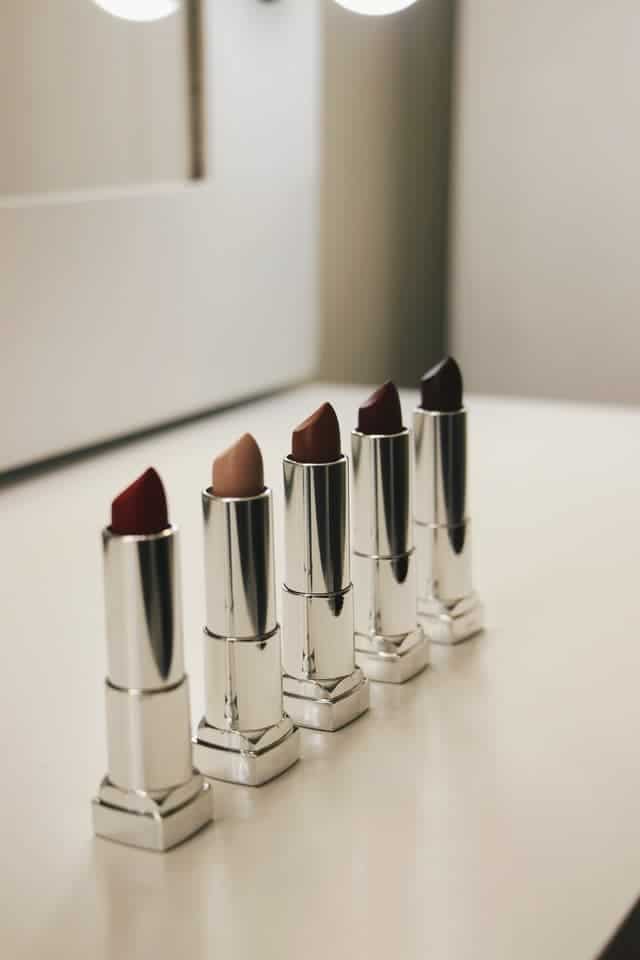
Provide them with necessary details of your desired outcome, particularly including how you envisage the product differing from what’s already available. All these details will assist the manufacturer in formulating a formula that will produce the desired final product.
However, you decide to have your formula developed; it will be a bit more costly than going with a more standard private label option – but may be worth it if it helps your product stand out from the crowd.
11. Find a custom packaging supplier
You want your product to look good from the moment that your customers open their mailbox, while also ensuring quality and alignment with your brand.
Fortunately, this is actually quite an easy process. Sites like Alibaba offer a huge range of packaging options that can be customized with basically whatever detail you want. They’re also more than willing to work with a small cosmetics business like yours, which is great compared to some of the major players that may not want to bother with you.
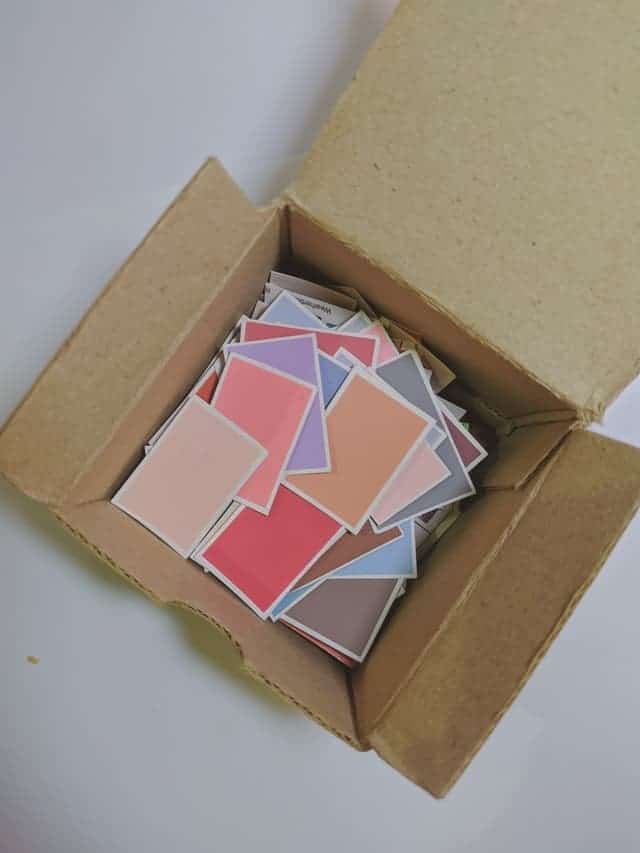
Take a look, for example, at some of the customizable lipstick tubes and boxes available as well as custom packaging for shipping your products to customers.
(Just make sure that your packaging follows the firm FDA guidelines on this point.)
12. Consider hiring a distributor
Those who start a small business from home often act as their own distributors at first, at least until the volume becomes too big to keep up with. This would mean having both your lipstick manufacturer and packaging supplier sending products to your house, for you to then box up and ship.
But if you don’t want to do this yourself, it’s important to secure a distributor at this stage. While the cost will clearly be higher than doing it yourself, it’s also much more effective for scaling up your business.
A good starting point can actually be to ask the manufacturer and packaging supplier you’ve chosen. They’ll almost certainly have more experience in the business of shipping products to customers so may have some good contacts or recommendations to put you on the right path.
13. Determine a marketing strategy
Having set everything in place, it is time to decide how to make the business known to your target customers. Online marketing is often the best strategy these days to generate interest, although this isn’t something that simply involves creating a few posts and then waiting for the money to roll in.
Instead, you have to be strategic, which is why working with someone who knows what they’re doing here could be an excellent use of your money.
How much does it cost to start a lipstick line?
The exact cost of starting a lipstick line will depend on a variety of factors. Initial business filing fees will be between $150 and $300, on average, however other aspects like manufacturing, shipping, human resources and marketing costs will add several thousands of dollars to the amount needed to start a lipstick business.
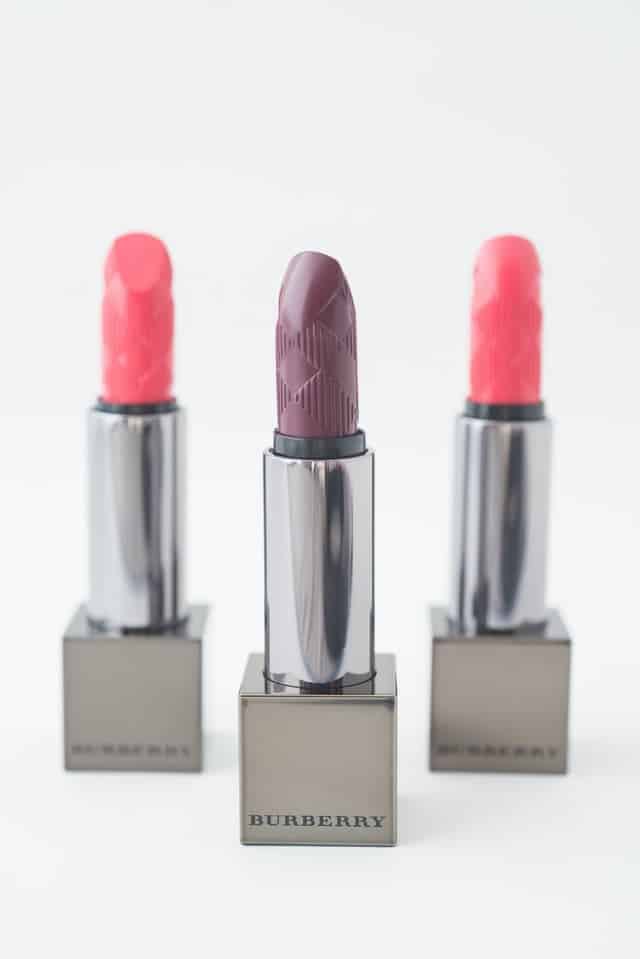
Some costs to factor into your calculations include the following:
- Inventory size: It’s important to have products on hand so you can ship to customers quickly, but you also don’t want to have too much available when you’re not sure yet what your highest sellers will be. This can be a real balancing act at first and will involve some outlay.
- Equipment: If you don’t manufacture your products on site, you won’t need any equipment to actually make the lipstick. However, some supplies will still be needed if you plan to do things like shipping yourself, which are all costs you’ll have to incur before receiving any profit.
- Human resources: These can be as high or as low as you can afford at first, ranging either from zero if you’re doing everything yourself to much higher if you plan to get professionals on board from day one. This will become a question of balancing the need to follow your business’ budget vs having the right manpower on hand to grow your business as planned.
How much does it cost to manufacture lipstick?
In general, a lipstick formulation costs about $0.10 to $3 per pound with an average cost of around $1 per pound. Packaging and labeling is usually around $1 for each lipstick unit, meaning that, overall, the average cost of manufacturing each product ranges between $2 and $3 per unit.
To breakdown these costs further, some of the aspects that go into manufacturing lipstick (that you’ll then pay for) include the following:
- Cost of ingredients: The cost of ingredients will depend on things like the manufacturer and the quantities purchased. For example, the suppliers’ costs for the ingredients will impact the cost passed on to you. At the same time, while buying more products equals increased ingredient costs, this may mean allowing you to pay less per pound if you buy in bulk.
- Packaging: Various factors influence the packaging cost. Such factors may include the size, shape, color, material and quality of the container. For larger containers, the company will end up using lots of materials, resulting in an increased price. Similarly, complicated shapes will take time to produce, resulting in high production costs.
- Testing: Every country has its own testing costs that apply to all relevant businesses. In most cases, this is usually a fairly defined cost, so you should check with the FDA or your local equivalent.
- Shipping: There are two sets of shipping costs to consider when looking into how to start a lipstick business. Firstly is the charge that the business will incur while shipping products from the manufacturer to either you or your distributors. From there, you will also have to consider the cost of transporting the goods to your customers.
- Human resources: How much do you (or your manufacturer or distributor) pay your workers? The pay will depend on individual roles in the company, the number of employees, and the number of hours worked daily. The business needs to account for such costs in the selling cost of lipstick.
Is a cosmetic business profitable?
Cosmetics businesses have proven to be highly profitable, with an average gross profit margin of 58.14%. Larger cosmetics businesses report even higher profit margins, including Estée Lauder with a 79.39% gross margin for the financial year ending 2017. Other companies have similar results, such as Avon having a margin of 81.61% and Revlon at 61.45%.
More information can be found here on these findings including the fact that, for many companies, that $3 per unit production cost often translates into a $100 product. You can probably see how they make their money with mark ups like that.
I also mentioned earlier how the cosmetics industry worldwide is worth over US$ 530 billion and is growing more every year – with the exception of 2020 which saw a major drop, likely because no one was leaving their homes. However, with that one exception, it’s clear that there’s plenty of money to go around here.
You may also be interested in: 11 Steps to Successfully Start a Paint and Sip Business
How can I sell my lipstick?
To sell your lipstick, creating an online store through options like Shopify is often the simplest first step. It allows you to reach a wide range of customers with minimal costs involved in setting this up, while also linking this to your own site and, in turn, growing your own brand recognition.

Other brands also often choose to start selling on sites like Etsy or even eBay. Those can be great, although consider the advantages of using Shopify (or a similar service) given that you can link it to your website. This has its own benefits, such as providing other information that may interest your customers or allow you to build a mailing list to encourage repeat business.
Are you planning on venturing into the cosmetic business to sell lipsticks? Are you wondering how to start selling lipsticks? While it is a profitable business, it requires planning and patients to get the product known in the market.
Related: How to Make Money on Etsy: Everything You Need to Know
How do I start selling lipstick?
There are a few steps you’ll need to take before actually listing your lipstick products for sale. These include:
- Secure sufficient product. It’s important to know you’ll have enough access to products that you’re selling so you don’t start your business by annoying your customers when they buy items that aren’t available or that take months to arrive. That said, this can actually be a marketing tactic, with companies like Tesla doing this really well. How they do it is they sell cars that are still in development, with the caveat that customers know they’ll have to wait some time before actually getting their vehicle. Whether or not that will work when starting a lipstick business is up to you to determine.
- Set your prices carefully. There’s a lot that goes into setting the price point of your products so do your research well. You may, however, want to consider some promotional prices at the start to get people talking about your new product line.
- Implement your marketing strategy. It’s time to start rolling out your carefully developed marketing strategy. Whether that’s generating buzz on social media or linking up with other brands to ensure people know what you’re selling will depend on your budget and target audience, but now is the time to start turning up the heat on this one.
- Make sure your selling platform is ready. The worst case scenario would be doing all of the above perfectly and then having the place where your customers can actually buy your product fail. That may mean triple checking that your website is up and running or going through the purchasing process to ensure that everything works and that people can actually pay for what they want. It can also be a good idea to ensure your platform of choice, even if it’s your own website, has a place for reviews so that happy customers can spread the word.
Can I make my own lipstick?
You can make your own lipstick at home but, if you’re planning to sell this, make sure that this is allowed under all relevant health and safety regulations issued by entities like the FDA. At the same time, offering homemade cosmetics can be a great selling point, especially when promoted as being made with natural ingredients.
The steps to make your own natural lipstick are as follows:
- Acquire the basic lipstick materials. Natural products like beeswax, shear butter, and olive oil can work well here.
- Choose the color. There are natural ingredients that can be used to create various red, pink, brown, or orange, and any other color that you would prefer. For example, use beetroot powder of crushed beet chips for a bright red color or cinnamon for a light red color. You could also consider mixing turmeric with another powder to give you the shade you desire or adding cocoa powder to give you a deep brown color.
- Combine the base ingredients. Mix the materials in the following ratios: Take a teaspoon of beeswax, mix it with a teaspoon of Shea butter to help with smoothening, and add a teaspoon of olive oil.
- Melt the base ingredients. Take the base ingredients prepared in the previous step and place them in a microwave. Heat the ingredients for 30 seconds to melt and mix them well until they thoroughly mix. If you do not have a microwave, you can use a double boiler to melt the mixture.
- Add color. After the ingredients are thoroughly mixed, it is time to add the color. Take 1/4 teaspoon of the powder color you want to use and mix it into the melted ingredients. Slowly add the color and continue stirring until you achieve the desired result.
- Pour the mixture into a lipstick container. You’ll need a mould if you want this to be in a lipstick shape so an easier option can be using a lipstick container like these ones. Once you’ve poured the mixture into these, allow it to cool and harden at room temperature before selling.
You may also be interested in: How to Start Your Own Dog Treat Bakery Business
Can I start a small lipstick business from home?
It’s certainly possible to start a small lipstick business from home and this can even be an advantage to save some money during the start-up period. In fact, many people do this if they’re treating their new business as a side hustle with the option to then scale it up to their full time work later.

You should keep in mind that you probably won’t be able to build a massive cosmetics line from home. At some point, you’ll need to move to more established facilities.
But if you’re just planning to sell at markets or on sites like Etsy to make some extra cash on the side, starting your lipstick business from home is more than feasible – just like any other at-home business.
Can I make and sell lip gloss?
You can certainly make and sell lip gloss, although it’s important to be aware of any applicable regulations before doing so. This includes following points like FDA packaging requirements, any health and safety provisions as well as more general licensing conditions for selling products.
Much of this process is the same as when learning how to start a lipstick business, so check out some of the points earlier in this article to see what may be involved in making and selling lip gloss.
This includes the fact that many lip gloss line vendors also rely on private label manufacturers, so you may want to consider the same, especially if you’re planning to scale up and so making this at home won’t be feasible.
You may also be interested in: 11 Simple Steps to Start a Popcorn Business
How much money do you need to start a lipgloss business?
To start a lipgloss business, budget around $5,000 to cover all initial costs. This includes the fees for the regulatory steps you’ll need to take as well as the costs involved in securing some products, including the product itself as well as associated shipping and packaging. Your budget should also include some marketing fees.
Some more details on these costs are as follows:
- Cost of raw material: If you plan to make your products yourself, what types of materials do you intend to use when producing your lip gloss? How much do they cost per unit, and what quantities do you need? Who is your supplier? By answering these questions, you can determine the cost of the materials.
- Cost of private label manufactured products: Alternatively, if you plan to go the private label route, you’ll need a manufacturer who understands your needs. Before starting off your operation, it is essential to factor in costs associated with the purchase of a private label item. Every private label manufacturer in this industry has their own pricing rates. Select one which will not only do what you want but also who is budget friendly.
- Cost of buying a business permit/license: How much does the business license cost? The cost of the permit varies from one state to another so do your research and factor this in.
- Marketing costs: There are numerous marketing strategies that one can use. Each of these strategies has varying costs as some are more expensive than others. If you rely on free social media posts like Facebook and Instagram pages, you may keep your costs down, although paid ads can work well on these platforms if you know what you’re doing.
- Website development costs: As you can see in our article on how to start a website, it’s more than possible to develop your site yourself. That said, you may not have the time or energy to do this, in which case you may want to hire someone to do it for you. There are plenty of very reasonably priced people who can do this on sites like Fiverr but you will have to factor this price in as well to your overall budget.
How much does lip gloss sell for?
Research shows that brands sell their lip gloss for anything from $2 per unit to more than $30 per unit. Some of the price variation comes down to production costs, including quality of the product, but much of it is simply brand recognition and the ability of some companies to charge more accordingly.
While it’s honestly debatable whether a $30 lip gloss really is that much better than a $2 gloss, there’s no doubt that a more expensive gloss definitely causes some customers to think it’s better quality, meaning it can be a very effective marketing tactic.
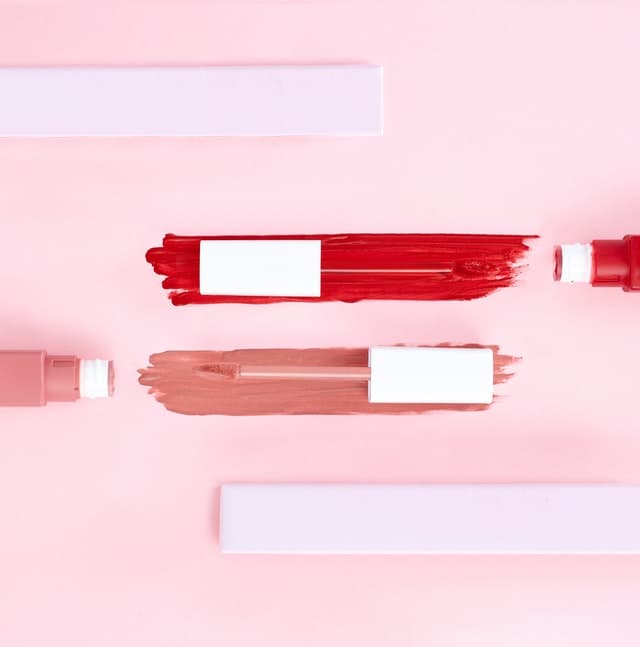
At the same time, there are certainly things to consider when determining the price of your product beyond the marketing aspect. These include:
- Production cost: The cost of production is going to be one of the primary factors influencing the pricing of your products. The costs involved are always factored into the selling price so that the business can recover these.
- Quality: Lip glosses are of varying qualities. Some work better than others in terms of lasting on the user’s lips for a prolonged period. Accordingly, it’s expected that the higher the quality of the lip gloss, the higher the price. That’s why most customers associate the cost of goods with their quality.
- Marketing strategy: Various marketing elements highly influence the prices of goods and services. Some marketing strategies like posting on social media are free, while others are costly. Thus, the choice of marketing will impact the pricing of the products.
- Buyers’ bargaining power: In a market where numerous sellers offer the same product of the same quality, the buyers’ bargaining power is high. In this case, the customers can reduce the prices of the commodities.
- Bargaining power of the supplier: How many suppliers of lip gloss are there in the market? This will be up to you to decide but, as a general rule, if there are few suppliers, meaning the demand is higher than the supply, the prices of commodities will rise. This is because suppliers will have the power to increase the prices in an attempt to balance supply with demand.
- Disposable income of the target customer: High-income earners will likely have high disposable income and, as such, they are thought to be capable of purchasing expensive products. While targeting them, it is essential to bear in mind your customers’ buying potential and their spending behavior. This includes questions like what products do they buy regularly, how much they spend on cosmetic products and so on.
How can I promote my lip gloss business?
1. Create a memorable brand name
There are numerous sellers in the market offering the same product. Every seller has a different brand name.
This means that naming your product something unique and that’s memorable makes it easier for your products to be recognized in the market by customers. At the same time, it also makes it easier for marketers to market their brands.
2. Social media marketing
You need to get your products out there for people to know about them and for many, the best strategy to do so is through online platforms.
This is why you should establish social media pages for your products and start posting in line with your marketing strategy to build buzz for your line.
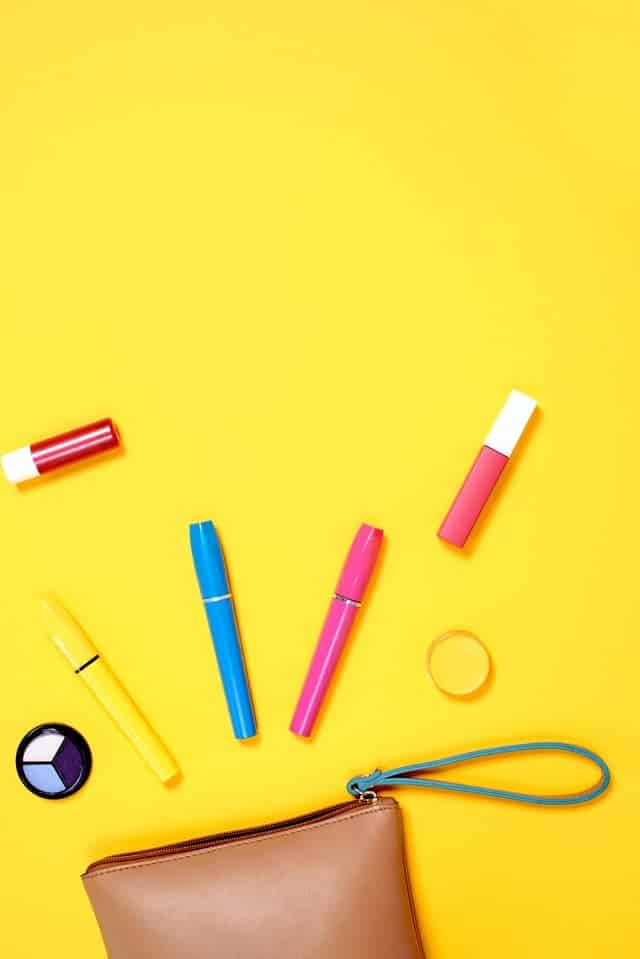
Remember that you don’t need to be on every single social media platform. Instead, your focus should be on those platforms that your target market uses. At the very least, this will likely include Facebook and Instagram.
3. Email marketing
This is another online promotion strategy that you can employ in marketing your products. Once you start to build your mailing list, write emails containing information that your target customers want to hear.
Just be careful not to spam people, as that’s a great way to turn them off from your brand.
4. Paid Google ads
This is another effective strategy that you can use to promote your product.
Set up a Google ads account and pay per click and view. After setting up an account, Google will automatically display your ad after determining your bid is successful for customers to view.
5. Run a promotion deal
A promotion deal is another strategy that you can use to promote your products effectively. Customers do not like missing out on good deals on products.
Giving out discounts, such as buy one get one free and relevant holiday deals, are some of the promotional deals that you can use to attract more customers.
Customers are going to be tempted to purchase your product. Such impulse buying behavior is great for your product.
Examples of people who started a lipstick business successfully
It can definitely help to hear the stories of those who’ve been there, done that. After all, they may be exactly where you’d like your lipstick business to be in the coming years, so learning from their mistakes as well as from their biggest lessons can be hugely helpful in growing your own business.
From these entrepreneurs, one thing they all have in common is the courage to take the risk. Without risking anything, you will never be successful; get out of your safe zone and do it.
1. Bobbi Brown
Bobbi Brown is the founder of Jones Road Beauty, although started as a makeup artist before launching her eponymous brand in 1991. She remained with Bobbi Brown Cosmetics for 22 years but left the company to pursue her new line, Jones Road Beauty, in 2016.
What led her to start the new line was the gap that existed in the cosmetic industry. She realized that some personal beauty products were handily available in the market and began a collection of all the things she could not find.
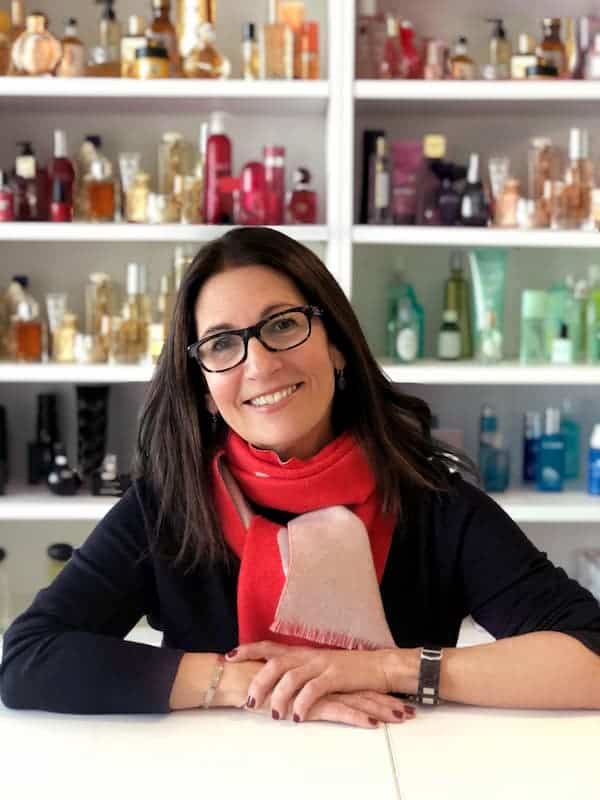
This shows that it’s not only market research that’s important to launching a beauty line. In addition, you can use your own experience to identify what’s missing or what is not being offered by the cosmetic industry and move towards filling this gap yourself.
Also, as an aspiring entrepreneur, Brown recommends that you should never wait for the perfect time to start; otherwise, it might never come.
She cites the motivating factor in starting her new brand as the fact that it allows her to have full control of its future. By selling your product online directly to consumers, she notes that you get a chance to receive direct feedback on improving the brand.
2. Ron Robinson
Ron Robinson is another successful entrepreneur in this cosmetic industry whose story can motivate aspiring entrepreneurs in this sector. He is the founder and CEO of BeautyStat, which is best known for its Universal C Skin Refiner.
As a cosmetic chemist in the 1990s, he formulated one of the most successful brands and some of the best-selling products in the industry. He also worked with other brands like Aramis and Avon before launching his own line in 2019.
Before starting his product line, he worked as a journalist for cosmetic chemists and beauty editors.
For aspiring entrepreneurs, he states that it is essential to test your products to ensure they meet the customers’ demands before releasing them. Similarly, working smarter is more rewarding than working harder.
He also notes that the driving force for his business, apart from the profits, is the customer’s positive feedback that he receives concerning his products.
3. Simedar Jackson
Simedar Jackson started her career as a beauty writer after college. Her desire to be in this industry started at an early age as she recalled how she used to get into trouble for wearing colored lip gloss in school. Currently, she is the founder of Skin Folks.
While working as a writer, she realized a market gap existed with not enough content about black people. It is this lack of inclusivity and representation in the industry that pushed Jackson to start her brand.
To aspiring entrepreneurs, her advice is to identify people with whom you share the same vision and interest, even if they are unknown to you. Also, while having a plan is a good thing, she cautions that sometimes you will be forced to take the risk even if you are scared rather than be regretful.
Finally, her overarching advice is to never wait for perfection to start; otherwise, you will never begin anything.
How did Kylie Jenner start her business?
When it comes to learning how to start a lipstick business, I’ve mentioned already how important it is to review the lessons learned of those who’ve come before you.
Kylie Jenner, however, may be an exception to that rule. She’s someone who’s seen huge success with her cosmetics company, eventually selling it to Coty for $1.2 billion.

At the same time, she had a platform that dwarfs anything that you or I could even dream of when launching a business. This means that the lessons learned from the case of Kylie Cosmetics may not necessarily apply to you when you start a small business from home.
In any case, when it comes to the question of how Kylie Jenner started her business, there are a number of factors she’s mentioned in various interviews:
- Leveraged her own passion for make-up and fashion. Kylie has mentioned before that she had a passion for make-up. In addition, she didn’t like the fact that she often faced her lips cracking from dryness. Based on this, she was determined to get the right products for her looks and needs, which led to the development of Kylie’s lip kits.
- Built on the development of her personal brand: Kylie apparently realized that many celebrities fail in business because they think their fame will help without hard work. As such, long before releasing the products, she (with some help from her mother and equally famous family members) started building her brand. After that, she leveraged her family business empire to establish her niche and started building up partnerships and endorsements.
- Successfully leveraged her social media reach: Her platform from Keeping Up With the Kardashians definitely gave her a competitive edge, given that the show was watched globally. Based on this, a lot of potential customers came to learn about her products through the media, which she then built up further using a firm social media strategy. Given that she, at one point, had the most liked Instagram post of all time, you can clearly see that she had a different social media reach than most other people starting a lipstick business.
- Identified a market gap: Kylie (or at least someone working with her, such as her mother) identified a gap within the cosmetic products and moved towards filling it. Notably, her products were made specifically to meet teenagers’ and young people’s previously unmet needs.
- Targeted marketing campaigns: By identifying the market gap, Kylie knew which people to target. She used her social media influence to conduct market research about her products. Safe to say, it was a very effective strategy that contributed hugely to the success of business.
Final thoughts on how to start a lipstick business from home
As you’ve seen, it’s more than possible for you to start a lipstick business from home or online.
Sure, there are definitely some costs to start a lipstick line, but that’s true for when you start any small business from home. And not all of them have as much potential to make money as the cosmetic business, which has proven to be profitable based on the fairly insane profit margins that many in this space experience.
It’s also true that when looking to start your own lipstick brand, you may start to feel that it’s not necessarily the easiest business to start. While it can be a bit daunting at first, you also shouldn’t be put off by some of the additional steps involved in securing your own products and ensuring that you comply with FDA requirements.
After all, if you have a passion for cosmetics and a willingness to work hard as a budding entrepreneur, who knows what success your new lipstick line could lead to!

